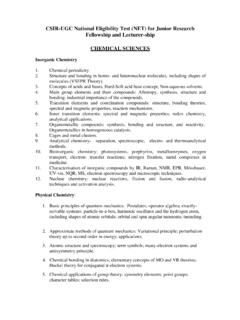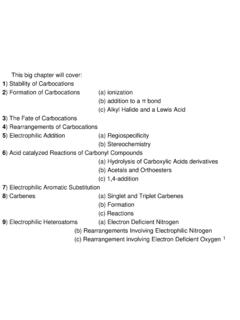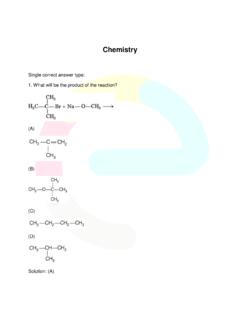Ionic Reactions Nucleophilic
Found 8 free book(s)Class - XII Multiple Choice Question Bank [MCQ ] Term I ...
roraipur.kvs.gov.inrotation mechanism of substitution reactions. Haloarenes: Nature of C–X bond, substitution reactions (Directive influence of halogen in ... mechanism of nucleophilic addition, reactivity of alpha hydrogen in aldehydes, uses. Carboxylic Acids: Nomenclature, acidic nature, methods of preparation, physical and chemical ... Ionic solid (B ...
CHAPTER 11 Mechanism of Enzyme Action
www4.unifr.chEnormous variety of chemical reactions within a cell 2. Mediated by Enzymes 3. ... nucleophilic group on enzyme attacks an electrophilic group on the substrate ... Stabilization through H bridges and ionic interactions . The interactions of lysozyme
B.Sc. - FIRST YEAR
mjpru.ac.inreactions, Mechanisms of nucleophilic substitution reactions of alkyl halides, SN2 and S N1 reactions with energy profile diagrams; Polyhalogen compounds : Chloroform, carbon tetrachloride; Methods of formation of aryl halides, nuclear and side chain reactions; The addition-elimination and the elimination-addition mechanisms of
AMIDES AND RELATED FUNCTIONAL GROUPS
webhome.auburn.eduB. Nucleophilic-Electrophilic Reactions and Hydrolysis Because of the resonance delocalization of the NBEs in these compounds, amides are significantly less nucleophilic than amines, and generally less electrophilic than esters. Again, the low nucleophilicity of amides relative to amines is a result of the reduced availability of NBEs to
CSIR-UGC National Eligibility Test (NET) for Junior ...
csirhrdg.res.in10. Pericyclic reactions – electrocyclisation, cycloaddition, sigmatropic rearrangements and other related concerted reactions. Principles and applications of photochemical reactions in organic chemistry. 11. Synthesis and reactivity of common heterocyclic compounds containing one or two heteroatoms (O, N, S). 12.
ORGANIC CHEMISTRY I – PRACTICE EXERCISE Sn1 and Sn2 …
personal.utdallas.eduand KCN in DMF (dimethyl formamide, a good polar solvent for ionic reagents). 5) Consider the reaction of (CH3)3CO-with iodomethane. Will the reaction rate increase, decrease, or remain the same if the concentration of iodomethane is increased? Explain. 6) Which of the following compounds will undergo an Sn2 reaction most readily? A) (CH3)3CCH2I
1) Stability of Carbocations - Rutgers University
crab.rutgers.edu1 This big chapter will cover: 1) Stability of Carbocations 2) Formation of Carbocations (a) ionization (b) addition to a πbond (c) Alkyl Halide and a Lewis Acid 3) The Fate of Carbocations 4) Rearrangements of Carbocations 5) Electrophilic Addition (a) Regiospecificity (b) Stereochemistry 6) Acid catalyzed Reactions of Carbonyl Compounds (a) Hydrolysis of Carboxylic Acids …
Chemistry
d2cyt36b7wnvt9.cloudfront.netreactions take place → gas is absorbed by KOH solution. Thus, a mixture of inert gases are obtained. 24. Consider the following statements. I. does not exist while does. II. Both and are paramagnetic. III. The three bonds are not equal in carbonate ion. IV. Head prefers to form tetravalent compound.
![Class - XII Multiple Choice Question Bank [MCQ ] Term I ...](/cache/preview/2/2/d/1/9/1/7/6/thumb-22d19176a1dd6102cff77672154d578a.jpg)






